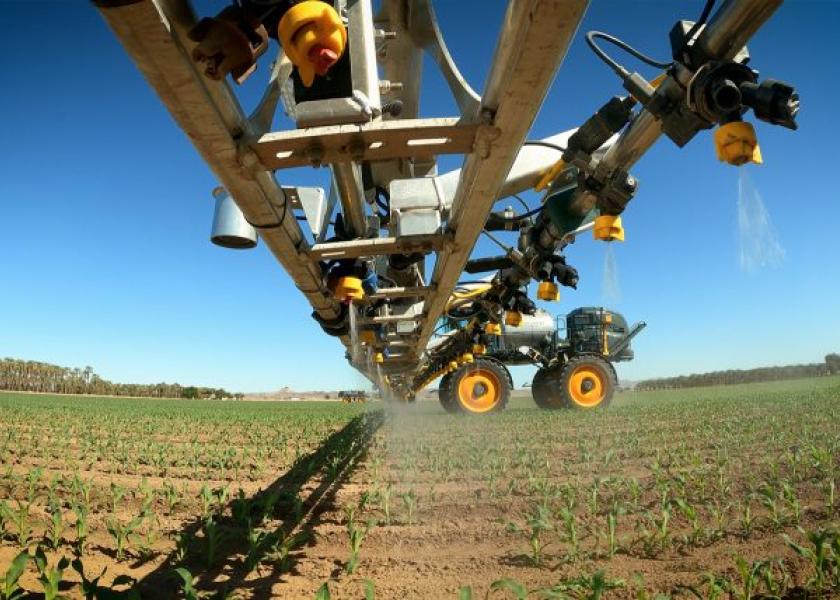NuWay-K&H Cooperative Offers Selective Spraying Via Greeneye Technology System

NuWay-K&H Cooperative has announced a major extension to its agtech offering following the purchase of a Greeneye Technology precision spraying system. NuWay-K&H will use the Greeneye system to offer selective spraying-as-a-service initially to its farmer members in Southern Minnesota and Northern Iowa, enabling them to significantly reduce herbicide use, increase the efficacy of their weed management programs, improve crop yields, and support sustainability initiatives.
Jeff Crissinger, VP of Agronomy Sales and Marketing, says: “NuWay-K&H Cooperative is committed to introducing cutting-edge technologies that deliver on our brand promise of being diversified, innovative and delivering exceptional value. The Greeneye precision spraying system fits firmly into the innovative category. The agriculture industry is undergoing major changes, and nowhere is this more evident than in the transition from broadcast spraying to smarter selective practices. As a cooperative, it is essential we are at the front end of this shift, both for the benefit of our farmer members, and for our own business.”
NuWay-K&H Cooperative will introduce the Greeneye system to members from the start of the 2023 season. To simplify the transition to precision spraying it has created a selection of input packages designed to meet farmers’ key objectives – from simple chemical volume reduction and cost savings, to boosting productivity by reinvesting savings into more sophisticated input programs that are not affordable when applied on a broadcast basis.
“Our customers are pretty aggressive at trying to find ways to push the yield curve,” explains Crissinger. “For example, we could use the Greeneye system to save them $20 dollars per acre on crop chemistry and stop there. However, what if we invest that $20 dollars into a yield enhancement strategy that generates ten more bushels of corn? In today’s market that would turn into an additional $60 dollars per acre, creating incremental profit potential. As we build the Greeneye system into our operations, we will be exploring all the ways we can create added benefits for our customers above what we can save them on crop protection products.”
Greeneye’s precision spraying system utilizes proprietary artificial intelligence (AI) to differentiate between crops and weeds in real time and spray herbicide only where needed – directly onto the weeds. Launched in the U.S. in 2022, it is one of the first commercially-available systems available in the country that is suitable for both pre- and post-emergence applications. In a recent independent field trial, it was proven to reduce non-residual herbicide use by 87%, on average, while achieving the same level of efficacy as broadcast application[1].
NuWay-K&H Cooperative selected the Greeneye precision spraying system following an extensive review of competing technologies that showed it was significantly ahead of the competition, says Crissinger. “There are lots of features that set the Greeneye system apart, but for us it offers four main advantages: ultra-high spraying resolution, seamless integration with our existing sprayer; green-on-green capabilities; and the ability to collect ultra-high resolution data from the field that will help us to more effectively tackle challenges such as nutrient deficiencies and disease.”
In addition to helping to overcome current weed control challenges, which include rising input costs and growing resistance of native weeds such as water hemp and giant ragweed, NuWay-K&H Cooperative believes the Greeneye system will also help to pave the way for farmers to work more effectively with major food companies who are looking to partner with sustainable producers.
Crissinger concludes: “Strip-till and no-till farming methods are not widely used in our part of the world, but they are becoming more common as our members seek to meet the needs of major food manufacturers and food service operators. These methods help to realize significant environmental benefits that can enable food companies to unlock carbon credits and meet their ESG objectives; however, they also create additional weed control challenges. As a forward-looking cooperative, it is our responsibility to ensure we provide our members with the tools they need to take advantage of changing market dynamics. We believe the Greeneye system will prove invaluable in enabling farmers to pivot to more sustainable production while keeping weeds, and costs, firmly under control.”







